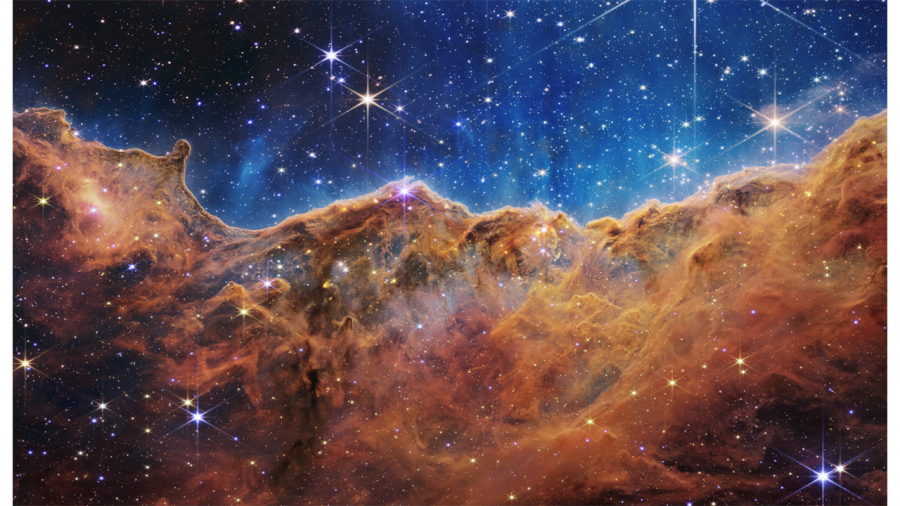The Universe Unveiled: How the James Webb Telescope unravels mysteries of Space.
The snapshots taken by the NASA James Webb Telescope shook the world in awe with its stunningly gorgeous snapshots of the universe in September 2022. With the lustrous stars sprinkled like jewels in the foreground and clouds of cosmic dust in a grandeur formation in the background, the pictures are overwhelmingly dazzling.
On the broad spectrum of electromagnetic lights, humans are only able to see a narrow strip of visible lights, impeding us from observing the vast majority of events that take place out in the universe. Yet the James Webb Telescope sets out to unveil what humans have only been able to imagine in the back of our minds for the past centuries by processing infrared lights then translating them to visible wavelengths for us to view.
Not only do the images render sensational pleasure, it also provides crucial information such as the formation of stars, galaxy evolution, and even the composition of certain celestial bodies.
A look at the Southern Ring Nebula reveals how nebulas could potentially influence the formation of other stars and planets. As stars eject gas and other molecules into space during the later stages of their lifespan, the dust eventually dissipates into the areas around it. Following billions of years of travel, these compounds may even be incorporated into new celestial bodies that are formed, pointing to the origins of the formation of stars.
This telescope also detected signs of complex carbon molecules known as polycyclic aromatic hydrocarbons, or PAHs, as a part of the compositions of molecules that originated from this nebula. Scientists have been going tangent off of this observation by relating it to the possibility of life beyond earth.
“Possibly, the formation of PAHs in these stars is a very important part of how life got started”, expressed Bruce Balick, an emeritus professor of astronomy at the University of Washington.
We should also keep in mind that the deeper we look into space, the further back in time we see. Because the galaxies and stars detected by the device are billions of light years away from earth, this means that we are perceiving them at a point in time billions of years ago.
This explains why the James Webb Telescope was specifically designed to see 13.6 billion light years away. The universe was formed 13.6 billion years ago, and the primary objective of this device was to “see the first objects that formed as the universe cooled down after the Big Bang”, as claimed by the Nobel laureate Dr. John Marther.
The space odyssey of seeking to unravel the mysteries of space has finally culminated in the creation of the most powerful device in the history of mankind up to date. Yet in the vastness of the universe, a revolutionary step taken by humans is merely a tap in the water of a boundless ocean that entails more mysteries than fathomable to uncover.











